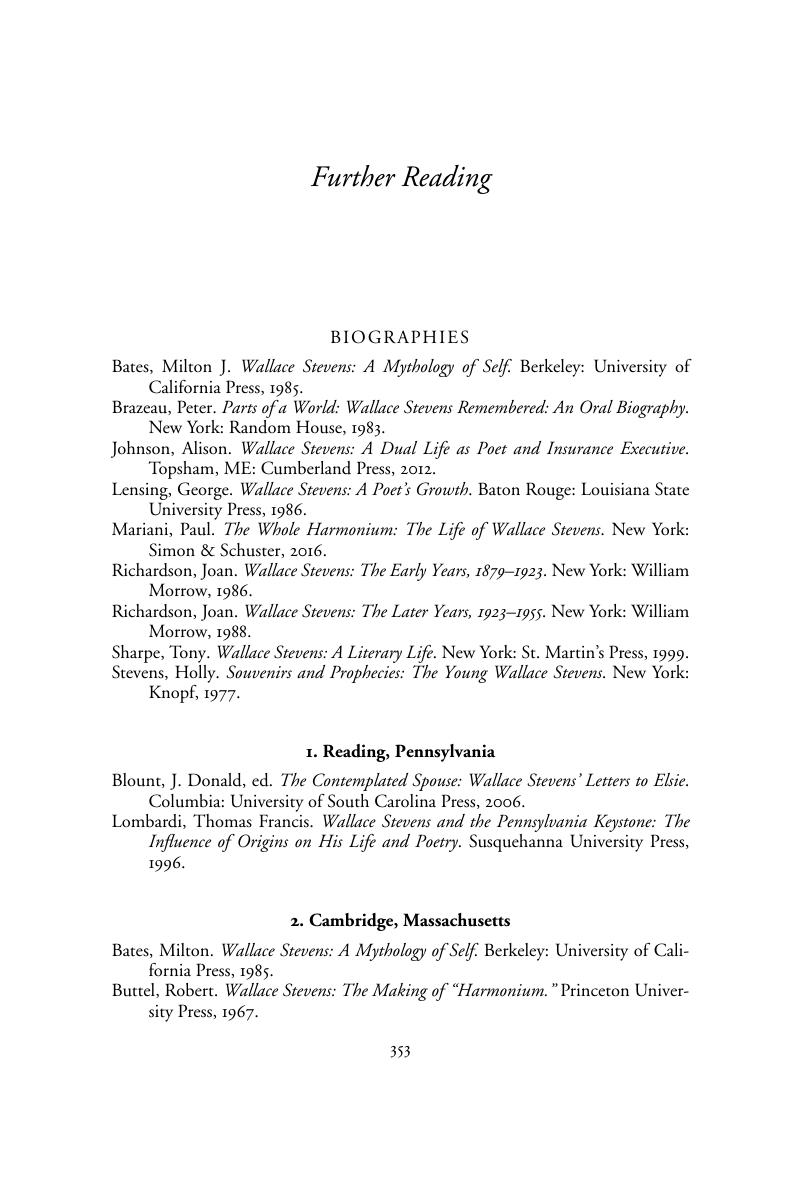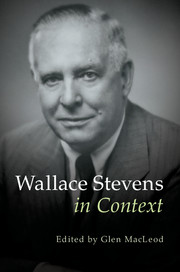Book contents
- Wallace Stevens in Context
- Wallace Stevens in Context
- Copyright page
- Contents
- Contributors
- Preface
- Abbreviations
- Part I Places
- Part II Natural Contexts
- Part III Literary Contexts
- Part IV Other Arts
- Part V Intellectual Contexts
- Part VI Social, Cultural, and Political Contexts
- Further Reading
- Index
- References
Further Reading
Published online by Cambridge University Press: 09 February 2017
- Wallace Stevens in Context
- Wallace Stevens in Context
- Copyright page
- Contents
- Contributors
- Preface
- Abbreviations
- Part I Places
- Part II Natural Contexts
- Part III Literary Contexts
- Part IV Other Arts
- Part V Intellectual Contexts
- Part VI Social, Cultural, and Political Contexts
- Further Reading
- Index
- References
Summary

- Type
- Chapter
- Information
- Wallace Stevens in Context , pp. 353 - 364Publisher: Cambridge University PressPrint publication year: 2016



